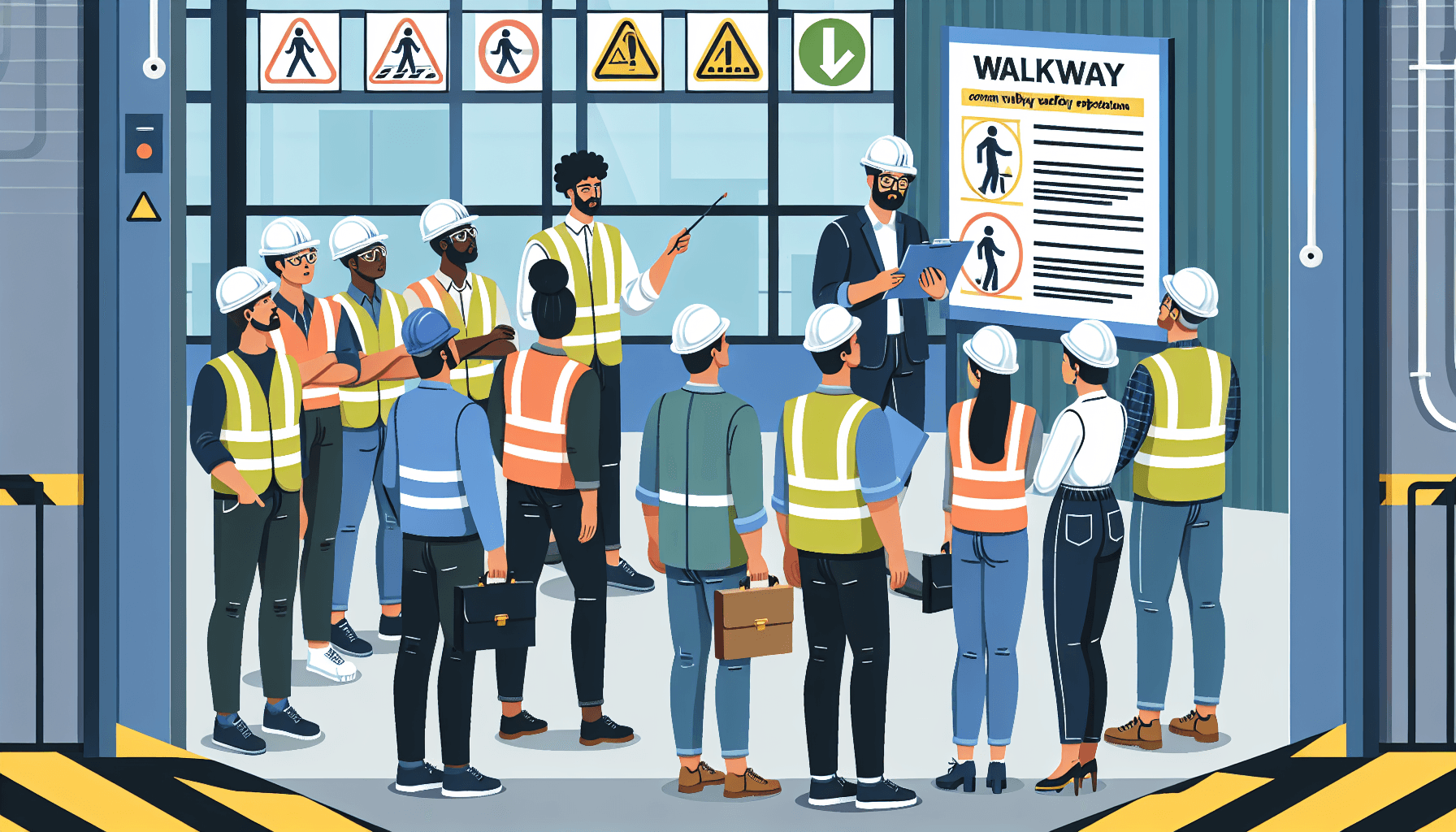Employee safety should always be a top priority in any warehouse operation. One critical aspect of ensuring employee safety is implementing and training employees on walkway safety protocols. By providing proper training, employees will be better equipped to navigate the warehouse floor, reducing the risk of accidents and injuries.
Why Walkway Safety Training is Essential
Warehouses can be busy, bustling environments with various types of equipment, machinery, and personnel all operating in close proximity. This can create hazardous situations, particularly when it comes to pedestrian safety. Without proper training, employees may not be aware of the potential dangers or know how to avoid them.
Walkway safety training is essential for several reasons:
- Preventing accidents: Training employees on walkway safety protocols helps minimize the risk of accidents, such as slips, trips, falls, and collisions with moving equipment.
- Promoting awareness: By educating employees about the potential hazards in the warehouse, they become more aware of their surroundings and can take necessary precautions.
- Improving efficiency: When employees understand and follow proper walkway safety procedures, it helps to create a smooth and efficient flow of operations in the warehouse.
- Reducing downtime: Accidents and injuries can lead to disruptions in warehouse operations, resulting in costly downtime. Training employees on walkway safety can help minimize these interruptions.
- Legal compliance: Ensuring that employees are trained on walkway safety protocols helps the company meet legal requirements and maintain a safe work environment.
Key Components of Walkway Safety Training
When developing a walkway safety training program, there are several key components to consider:
1. Risk Assessment and Hazard Identification
Start by conducting a thorough risk assessment of the warehouse to identify potential hazards and assess the likelihood and severity of injuries. Common hazards to consider may include slippery surfaces, uneven flooring, low visibility areas, and proximity to moving equipment.
2. Walkway Design and Maintenance
Train employees on the importance of walkway design and maintenance. Ensure that walkways are clearly marked, free from obstructions, and well-lit. Regular inspections and maintenance should be conducted to address any issues promptly.
3. Personal Protective Equipment (PPE)
Include information on the proper use of personal protective equipment (PPE) such as safety shoes, high-visibility vests, and hard hats. Emphasize the importance of wearing PPE in designated areas and explain when and why certain equipment is necessary.
4. Traffic Management
Teach employees about traffic management in the warehouse, including the safe movement of pedestrian traffic and the interaction with forklifts and other machinery. Explain the significance of designated walkways, crossing areas, and the importance of maintaining a safe distance from moving equipment.
5. Emergency Procedures
Outline the emergency procedures that employees should follow in the event of an accident or emergency situation. Train them on how to report incidents, initiate first aid measures, and evacuate the area if necessary.
6. Ongoing Refresher Training
Walkway safety training should not be a one-time event. Implement a system for ongoing refresher training to reinforce the importance of adhering to safety protocols. Regular reminders, safety meetings, and periodic updates can help keep safety at the forefront of employees’ minds.
The Role of Technology in Walkway Safety
Advancements in technology have revolutionized warehouse safety, including walkway safety. Companies now have access to innovative solutions, such as the forklift pedestrian detection system offered by HCO Innovations. This system utilizes advanced sensors and real-time information to detect the presence of pedestrians in the vicinity of forklifts, providing early warnings to both the driver and the pedestrian.
By integrating technology into walkway safety practices, companies can further enhance employee safety and minimize the risk of accidents and injuries. These systems not only ensure the safety of employees but also contribute to the overall efficiency and productivity of warehouse operations.
Conclusion
Effective walkway safety training is essential for creating a safe working environment in warehouses. By implementing comprehensive training programs that cover risk assessment, walkway design, PPE usage, traffic management, emergency procedures, and ongoing refresher training, companies can significantly reduce the risk of accidents and injuries. Additionally, integrating advanced technologies like forklift pedestrian detection systems can provide an extra layer of safety and further enhance employee well-being. Prioritizing walkway safety training not only protects employees but also leads to a more productive and efficient warehouse operation.

